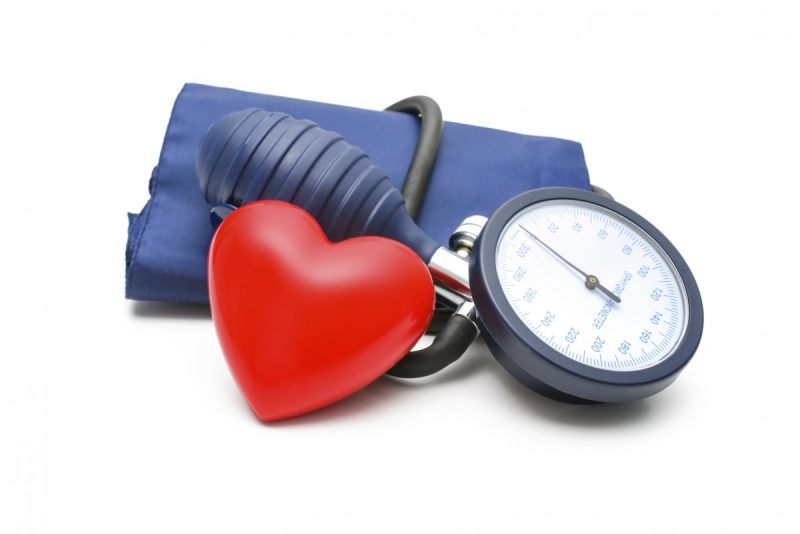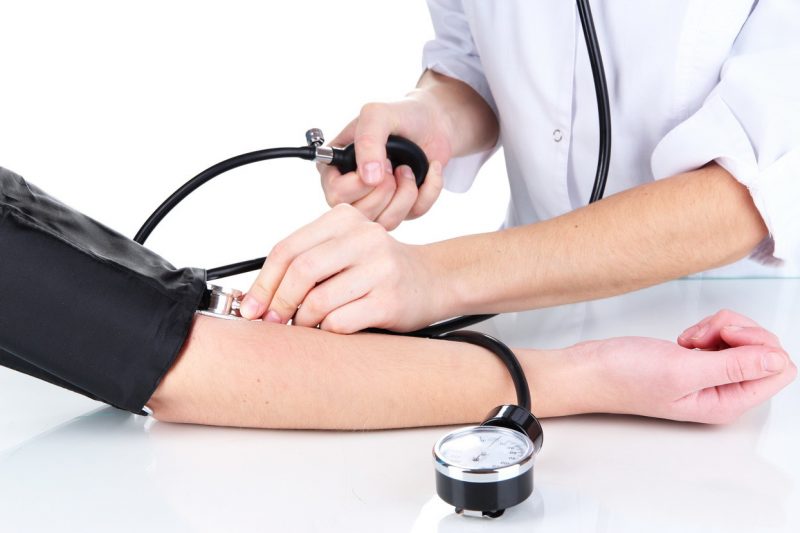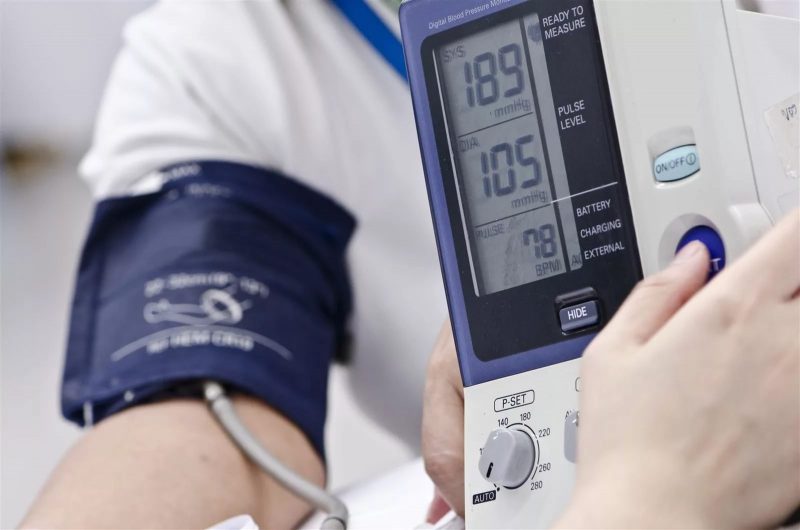Violation of the norm of blood pressure worsens the patient’s condition, and in some cases completely confuses him to a hospital bed. It will be useful for the adult population to know what “healthy pressure” should be for a person. Norms on the age of this indicator are described in detail below.
Material Content:
Pressure norm by age:

First you need to clarify that the norm of blood pressure primarily depends on the age of the patient (it is noted conditionally: child-teenager-adult). His gender is also taken into account. Trying to figure out what pressure is normal for a person, you need to take into account both of these factors.
Adult guidelines
If we talk about adult representatives of the stronger sex, then for them the optimal pressure limits are 123 / 76-129 / 81 mmHg. Art. Such indicators are relevant at the age of 20 to 45 years.

For women, the following indicators are considered normal pressure from the age of 20 years: 120/75 mm Hg. Art. These figures are relevant even in 30 years. As for the fair sex at 40 years old and at 50 years old, these indicators change and are obtained as follows - 127/78 mm Hg. Art.
Norm in children
In general, the "children's limit" according to blood pressure does not exist. In babies, pressure is usually measured only if there are any health problems. The established norms also depend on them.

As a rule, at the age of 1 year, the minimum / maximum lower blood pressure should fluctuate between 40-50 / 50-74 mm RT. Art. And the minimum / maximum upper - 60-90 / 96-112 mm RT. Art. Further, with age, these indicators gradually increase. By 12-15 years, the lower one is in the range of 70 / 80-86 mm Hg. And the upper one is 110 / 126-136 mm Hg.
Normal pressure in adolescents

For adolescents (from 16 years old) the exact norm of blood pressure is already established. It is 100-120 / 70-80 mm RT. Art. If the parents noticed a violation of the lower or upper boundaries, then the child must be shown to a specialist. Most likely, he will be assigned a full examination, which will determine the causes of negative changes.
Table of human pressure standards
The table below shows the norm of pressure in a person by age is filled with indicators characteristic of absolutely healthy people. If the patient has noticed deviations from these figures when measuring blood pressure, then you should seek the advice of a specialist.
| Age | Floor | Pressure (norm) mmHg Art. |
|---|---|---|
| 20 | M | 123/75 |
| 20 | F | 116/73 |
| 30 | M | 126/81 |
| 30 | F | 120/76 |
| 40 | M | 129/82 |
| 40 | F | 127/81 |
| 50 | M | 135/84 |
| 50 | F | 137/85 |
| 60 | M | 142/85 |
| 60 | F | 144/84 |
| 70 | M | 145/81 |
| 70 | F | 159/86 |
What diseases can high or low blood pressure indicate?
Of course, blood pressure does not rise or fall just like that. There are certain reasons for this. They definitely need to be correctly determined in order to choose the appropriate therapy for the patient. The reasons for the increase and decrease in pressure are fundamentally different.

Increased blood pressure is also called "hypertension." It occurs in two types. The first type is hypertension. Represents chronic high blood pressure. To this day, even the most qualified specialists cannot explain its reasons. The second type is arterial hypertension. With this problem, a periodic increase in blood pressure is observed.
Such changes occur for the following reasons:
- stress and frequent emotional distress;
- improper unbalanced diet (especially - a large number of salty and fatty foods in the diet);
- bad habits (smoking, addiction to alcoholic beverages);
- lack of physical activity in everyday life;
- excess weight.
The pressure can sharply “jump” after drinking coffee or an alcoholic beverage, a smoked cigarette, taking certain medications, sports training or bathing procedures. For the fair sex, this problem often occurs during menopause.
In some cases, high blood pressure is a symptom of a dangerous disease.
For example, it can rise with:
- Diabetes mellitus.
- Serious kidney disease.
- Heart defects.
- Problems in the thyroid gland.
Doctors call low blood pressure hypotension.

The drop in blood pressure also has its own reasons. Among them are the following:
- severe infections (e.g., sepsis);
- allergy;
- gastrointestinal ailments;
- heart and vascular disease;
- taking antidepressants and / or diuretics;
- significant loss of blood;
- endocrine system diseases;
- dehydration of the body;
- strict diet with a lack of folic acid and certain vitamins;
- work in harmful conditions (underground, at high humidity or temperature, etc.).
In addition, blood pressure often decreases in pregnant women. If it falls slightly, then it is not dangerous for the mother and the fetus. A sharp change in position, for example, from a recumbent to a sitting one, can lead to the changes under discussion.
How to lower blood pressure?
If the pressure in a man or woman turned out to be very high, then you must immediately call an ambulance. While the doctors get to the place, they will need to sit the patient on the sofa and put a pillow under his head. Clothes that compress the chest are removed from the patient, legs are wrapped. You can attach a warm heating pad to the calf muscles.
So that the patient does not get nervous, it is worth giving him any sedative. If he has pain in the chest area, it is important for him to take a tablet of nitroglycerin or take 5-6 pieces of glycine under his tongue.
If lowering blood pressure does not require urgency, then you can begin to improve your condition gradually. To begin with, exclude strong tea, coffee, alcoholic drinks, smoked meats, very salty and fatty foods from the diet. If possible, salt is best removed from the diet.

If life is full of excitement, then special efforts should be made to normalize your emotional state. You can take natural sedatives. For example, tincture of lemon balm, valerian, peony and others like that.
To maintain health, you need to stop smoking and lower cholesterol. It will be useful to remove excess fluid from the body. For example, using infusions of diuretic herbs.
You should take care of regular physical activity and begin to lose weight. The main thing is not to use strict diets and exhausting workouts for this.
Of the drugs used to lower blood pressure, Dibazole, Phentolamine, Anaprilin, Pentamine and other similar ones are used. Their selection and dosage determination should be done exclusively by the attending physician.
How to increase pressure at home?
In order not to suffer from changes in blood pressure and, especially, from lowering it, it is worthwhile to correctly draw up your schedule of rest and wakefulness. Hypotonic patients need to sleep at least 9-10 hours. It is advisable to relax also in the daytime.
For the patient, daily exercises should be light gymnastics and a contrast shower. You need to eat under reduced pressure often, but in small portions. The diet should be healthy and balanced.
In hypotension, the workplace must be well lit. It is required and regularly ventilate the room.
As for folk remedies, with hypotension you can drink tincture of Eleutherococcus or ginseng. At 32-33 drops per serving. A cup of strong green tea or coffee will also help to quickly increase pressure.

If the pressure began to drop sharply, and the patient felt ill, then a pinch of salt should be put on the tongue. This will quickly alleviate the condition. Replace salt with canned cucumber or salted nuts. Helps and applies to the heels of a cut of natural tissue, abundantly dipped in apple cider vinegar. This procedure relieves headache resulting from a drop in blood pressure.
Increases pressure and hot hibiscus tea. The main thing is not to forget that when cold, such a red drink gives the opposite effect. Tea should be freshly brewed. Sugar can be added to it.
If clove or jasmine essential oil is on hand, you can drop it on a handkerchief and breathe in a pleasant aroma for a couple of minutes. A piece of quality dark chocolate and ginger tea will also help to increase pressure. Ginger root also strengthens the blood vessels of the brain and heart.
Of the drugs for the purpose under discussion, Citramon, Askofen, Noradrenaline, Mesatone and other similar ones are used. It is allowed to use ascorbic acid, which increases the elasticity of blood vessels.
How to measure pressure?
For some ailments, doctors recommend that patients regularly regularly measure their own pressure at home and monitor its performance. This is done quite simply. The condition of a person should be calm.
A special apparatus for measuring blood pressure is always fixed in the upper part of the forearm. To determine the “suitable” hand, you need to measure the discussed indicator on both limbs with an interval of a couple of minutes. The procedure is repeated 3-4 times. The results are entered in the table. The hand on which higher values are fixed will be used for blood pressure measurements in the future.

Most often, measurements are carried out by electronic and mechanical tonometers. The process diagram will depend on the selected device.
If an electronic device is used, then it is necessary:
- Raise the sleeve and put on a special cuff of the tonometer.
- Place your hand on a table at heart level and press the device button.
- Expect results on the instrument screen.
- Repeat the procedure after 6-7 minutes to calculate the average value.
If a mechanical tonometer is selected, you need to:
- Relax, keep warm if necessary.
- Sit with support on the back of the sofa, relax your legs and wrists.
- Put your hand on the table at approximately heart level, put on a special cuff on it. The forefinger should pass freely between the last and forearms. The lower edge of the cuff is 2.5 cm above the fold of the elbow.
- Install the phonendoscope in the elbow fossa in the place where the pulse is clearly palpated, and fix it with your finger.
- Tighten the screw on the side of the “bulb” and pump air into the cuff until the tonometer needle shows a value of 210.
- Release the “bulb” and slightly open its side valve counterclockwise.
- Listen and follow the tonometer scale until the first beats. The figure on which they were heard will be an indicator of the upper pressure. And the indicator at which the last distinguishable sound will be heard will demonstrate lower pressure.












